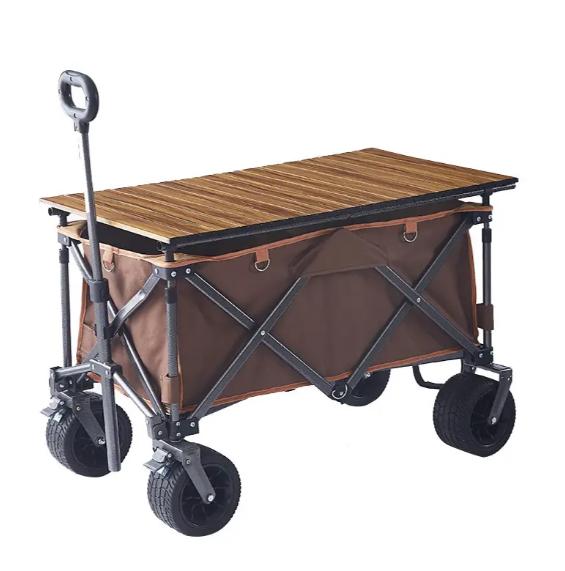Collapsible wagon with wheels is versatile tools designed for various outdoor activities, including camping, gardening, and beach trips. However, their performance on sand can vary significantly depending on several factors. This article explores the effectiveness of collapsible wagons with wheels on sandy terrains, highlighting the key considerations and potential challenges.
Key Considerations for Using collapsible wagon with wheels on Sand
Wheel Design and Size
The design and size of the wheels play a crucial role in how well a collapsible wagon performs on sand. Wagons with larger, wider wheels tend to perform better on sandy surfaces. Larger wheels help distribute the weight more evenly, reducing the risk of the wagon sinking into the sand. Additionally, wheels with a rubber middle tread are often more effective in providing traction and stability on loose sand.
Load Capacity and Weight Distribution
The load capacity and how the weight is distributed within the wagon are also important factors. Overloading the wagon can make it more difficult to maneuver on sand, as the increased weight can cause the wheels to sink deeper into the sand. It is advisable to distribute the load evenly and avoid overloading, especially when navigating through loose sand.

Terrain Type
The type of sand you are dealing with can significantly impact the wagon’s performance. Firm sand, such as that found closer to the waterline, is generally easier to navigate than loose sand further from the water. Wagons may perform adequately on firmer sand but struggle on loose sand, requiring more effort to pull and potentially leading to the wagon getting stuck.
Challenges and Limitations
Difficulty in Maneuvering
One of the primary challenges of using collapsible wagons on sand is the difficulty in maneuvering. Even when partially loaded, pulling the wagon through loose sand can be a strenuous task. The wheels may sink into the sand, making it hard to maintain control and direction. This can be particularly frustrating during beach trips or other activities that involve navigating through sandy areas.
Potential for Getting Stuck
Another limitation is the risk of the wagon getting stuck in the sand. This can happen if the wheels sink too deeply or if the load is not distributed properly. Getting the wagon unstuck can be time-consuming and may require additional effort, which can detract from the overall enjoyment of the activity.
Tips for Improving Performance on Sand
Adjust Load Distribution
To improve the wagon’s performance on sand, it is essential to adjust the load distribution. Ensure that the weight is evenly spread across the wagon to prevent any one area from bearing too much weight. This can help the wheels maintain better contact with the sand and reduce the risk of sinking.
Use Larger Wheels
If you frequently use the wagon on sandy terrains, consider investing in a model with larger wheels. Larger wheels can help distribute the weight more effectively and provide better traction on loose sand. Additionally, wheels with a rubber middle tread can offer more grip and stability.
Choose Firmer Sand
Whenever possible, try to navigate on firmer sand. This can make it easier to pull the wagon and reduce the risk of getting stuck. If you are at the beach, consider staying closer to the waterline where the sand is generally firmer and more compact.
Conclusion
Collapsible wagons with wheels can be effective tools for various outdoor activities, but their performance on sand can be challenging. The design of the wheels, load distribution, and the type of sand all play significant roles in how well the wagon performs. By understanding these factors and taking steps to improve performance, you can enhance your experience and make the most of your collapsible wagon on sandy terrains.
